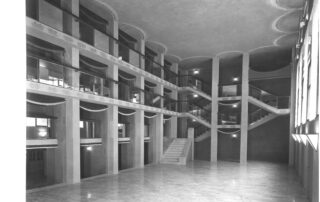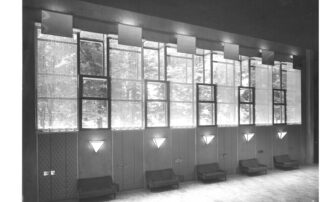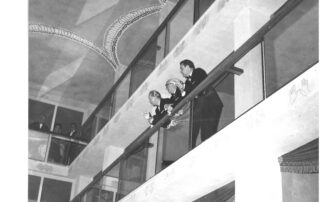“Ridotto” in Italian generally means shrunk, limited in size, but this is actually a very large space. It’s where people meet during the breaks, a space to get together and to make comments on the shows. When the Theater was born the ridotto wasn’t part of it: it was added in 1964, when the Theater underwent a few years of restoration works. Not everybody liked it at first, and some of my longtime spectators even refused to come here, saying that there was too much light, too much reflection and very little substance!
The official opening of this new space was amazing: on stage the Theater had Lucia di Lammermoor by Donizetti, with Renata Scotto as Lucia and Gianandrea Gavazzeni on the podium. In the Nineties, ridotto was finally dedicated to him. The performance was a huge success: in the third act, Renata Scotto was asked for an encore fifteen times and the final applause took fifteen minutes.
Fur coats, shawls, embroidered jackets: the elegance of women was all over the papers. That night, many people gathered outside the entrances to watch and comment on the box owners and the other spectators as they were filing in. On performance evenings, women were very careful about their outfits as these somehow represented their families. On such a special occasion, all of them strived to display the most fashionable looks and be praised for their elegance. Some of them had their dresses shipped all the way from Paris. Men wore tuxedos and were perfectly shaved. Elegance was a shared code.
Many famous personalities were seen among the audience, that night. Franca Valeri stood out for her beautiful dress: it was black with a stiff, high, white neck, long black sleeves and white cuffs.
The theatre was also filled with intellectuals, critics and fashion models from Milan, so that someone said that Bergamo was competing with La Scala, that night.
Ridotto has been restyled and modernized in 1964, in 1982 and in 2020.
THE RIDOTTO BALCONY – A historical gallery
The ridotto is surrounded by staircases. They were heavily criticized in the early days, and even compared to those of a famous American prison!
It’s a sort of time machine, a historical gallery.
Armchairs, benches and chairs from previous setups of the Theater: worn out fabrics recall hundreds of performances and viewers, wood details tell the stories of the artisans who proudly worked to decorate me.






